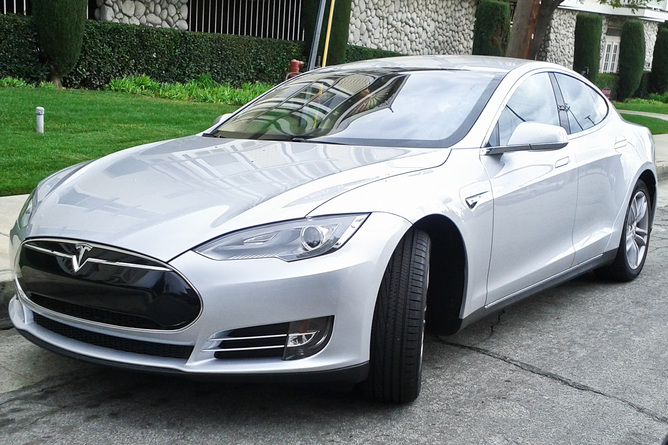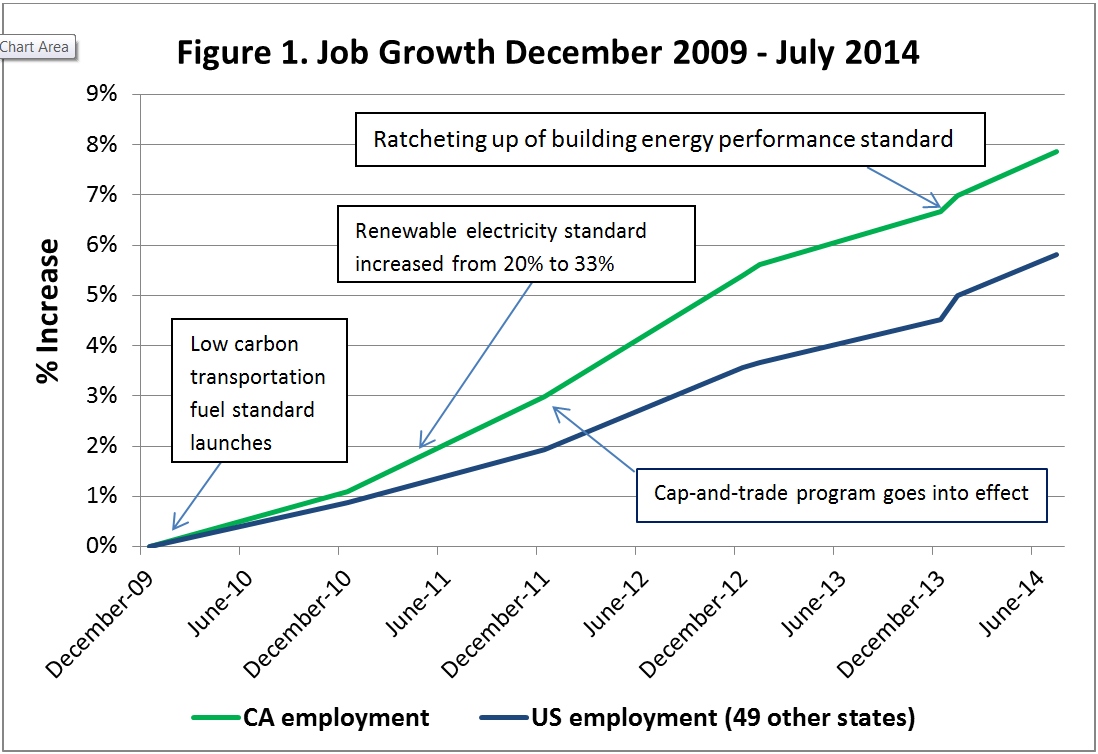
California Jobs Rise with Green Energy

Chris Busch, director of research at Energy Innovation: Policy and Technology, contributed this article to Live Science's Expert Voices: Op-Ed & Insights.
California recently re-ascended to the rank of 8th largest economy in the world, passing Italy and Russia. Beginning in 2011, the state's job growth began significantly outpacing that of the national average. Since the low point of the recession around December 2009, California employment has increased 7.9 percent as compared to 5.8 percent growth for the rest of the nation. During this same period, a host of clean-tech bright spots have emerged, contributing to the state's economic surge. While more traditional jobs have played a larger role in growth than green jobs (narrowly defined), every industry in California's economy uses energy, so all are involved in the energy transition.
From energy production to passenger vehicles, California has become a global leader in pioneering clean-tech markets, as well as new financing tools to bring these innovations to market. Some of the world’s largest economies are taking note of the state’s gains and have begun to emulate its policies and practices that may lead them to similar economic prosperity. [California’s Recycling Target Could Create 110,000 New Jobs (Op-Ed )]
California has made steady progress in the introduction of renewable energy, such as wind and solar power. By 2013, renewables already accounted for 23 percent of the electricity supply from the state's investor-owned utilities. Enough electricity is generated from renewables (approximately 45,000 GWh) to power more than 6 million California households. And the state is continuing to charge ahead on this front. In April of 2011, California Governor Jerry Brown signed into law a requirement that 33 percent of the electricity sold by utilities come from renewable energy sources by no later than 2020.

The great strides of the state's utilities do not even account for the clean power achieved through the installation of small-scale residential and commercial rooftop solar panel systems, which are typically not factored into the utility requirements. California leads the nation with more than 240,000 solar systems installed and more than 47,000 people working in the solar-power sector, accounting for a third of the nation's total solar jobs.
Solar companies based in the state, such as Solar City, Sunrun and Clean Power Finance have invented new financing forms that have been a catalyst for the growth of the industry. (Improvements in the cost of solar panels have also helped propel the industry forward.)
The state is leading in electric vehicles, too. Electric vehicles accounted for almost five percent of new vehicle sales in California during the first quarter of 2014. Tesla's Model S battery-electric car earned the top rating ever bestowed on a car by Consumer Reports and is an investor darling. Tesla paid back its federally-backed loans early, and today employs 6,000 people. Investors in Silicon Valley have even begun promoting their innovations as "the Tesla" of their industry, evoking the success of that company.
Sign up for the Live Science daily newsletter now
Get the world’s most fascinating discoveries delivered straight to your inbox.
Silicon Valley has emerged as a global center of clean-tech innovation and investment. Total venture capital investment in California's clean-tech sector was over $20 billion from 2006 to 2012, which represents close to 60 percent of the nation's total. [How Tesla Motors Builds One of the World's Safest Cars [Video] ]
None of these technological advances would have succeeded without proper policy. In 2006, California passed the first state law to comprehensively manage greenhouse gas emissions, the Global Warming Solutions Act. The law covers the entire economy, requiring that state-wide emissions return to 1990 levels — which is an 11 percent improvement from 2006 levels, and 30 percent below business-as-usual forecasts for 2020. By 2008, the state had adopted a policy blueprint to achieve that goal, and it had introduced all of the recommended policies by January 2012. After passing a series of interim updates, in May California approved a comprehensive update to their state blueprint and presented its plans for the future.
California has a long history of innovation in energy policy, and a proven record of exporting these policy innovations to other places. In the 1970s, the state pioneered performance standards for buildings and appliances. These have since become the default approaches in jurisdictions around the world. California also established one of the first renewable electricity standards. Today, 30 other states have introduced renewable energy requirements.

There is good reason to believe that California's approach to cap-and-trade program design will also be influential. Since launching in January 2012, the California program has resulted in a well-performing, stable carbon market. China has launched pilot programs in five municipalities (Beijing, Shanghai, Shenzhen, Tianjin, and Chongqing) and two provinces (Guangdong and Hubei) that are home to over 200 million people, and the Chinese government is sending technical staff to study California's program in order to help shape their own cap-and-trade systems. This is just one concrete development that has emerged from Governor Brown's influential visit to China in 2013.
Opponents of California's leadership on climate action have consistently rung alarm bells and predicted economic ruin. Those who have rooted for failure must be disappointed. In countries around the globe, California's achievements and continued ambitions are a beacon of hope. Clean energy has gone from boutique to mainstream , and California's combination of climate ambition and surging economy is generating optimism for all that carbon-free prosperity is within reach.
There is more work to be done. Fortunately, the state's policy community is actively developing plans to refine and extend California's climate and energy policy framework. The public remains supportive of this, and there is evidence that the state's leadership has the vision and determination to put in place the next generation of policy initiatives.
Follow all of the Expert Voices issues and debates — and become part of the discussion — on Facebook, Twitter and Google +. The views expressed are those of the author and do not necessarily reflect the views of the publisher. This version of the article was originally published on Live Science.









